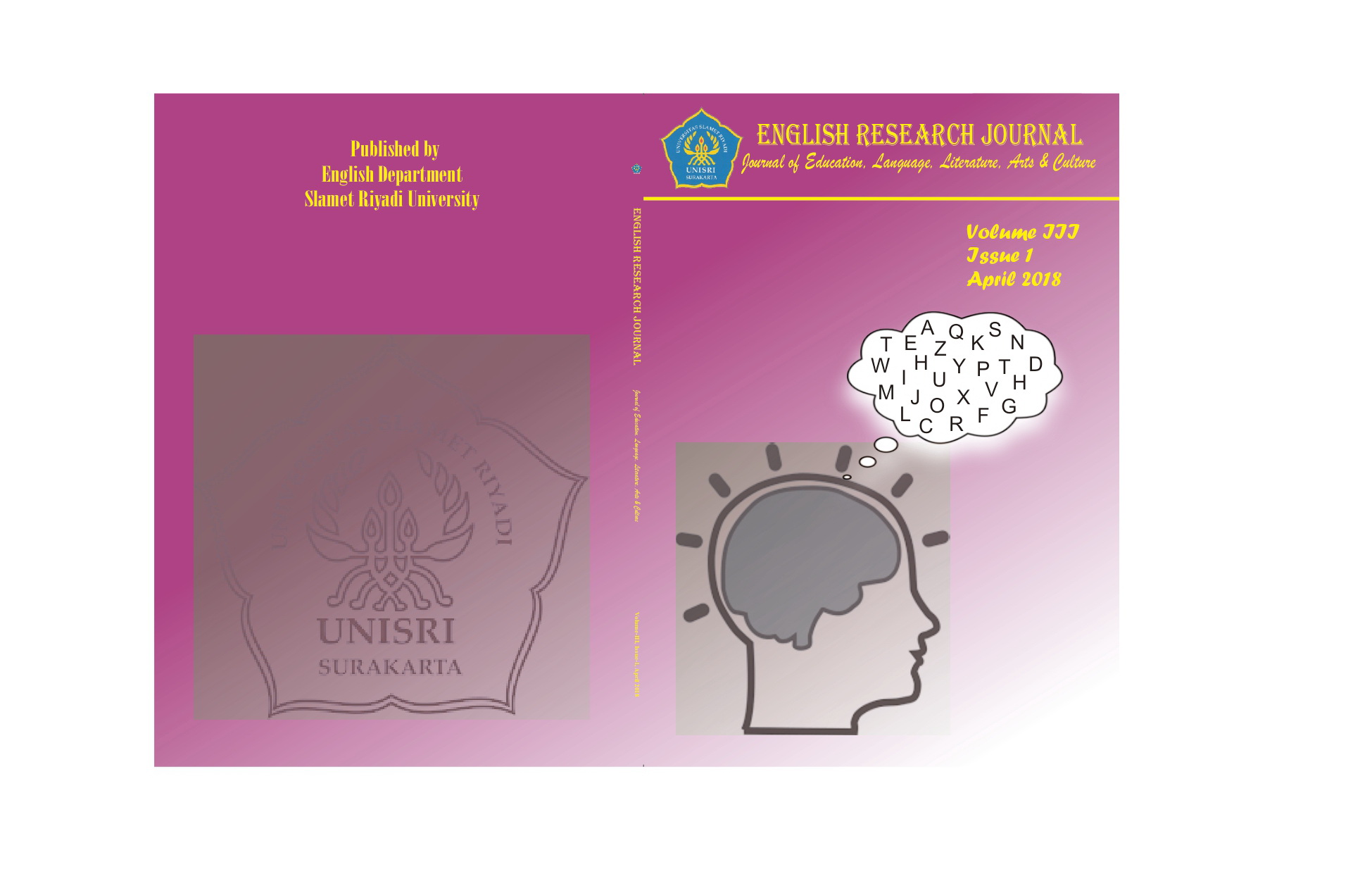The Representation of Samuel Huntington's Clash of Civilization in Buried
DOI:
https://doi.org/10.33061/erj.v3i1.3024Abstract
This research focuses on civilization clash taking place in Baqubah, Iraq during War on Terror campaign portrayed by Buried, a film released in 2010. It is conducted under American Transnational Studies frame, and uses socio-cultural and historical approach to construct the thesis. It considers research from Rwaida Gharib (2009) and Jasna Poljak Rehlicki (2015) as the foundation to continue the discussion of civilization clash in Baqubah, Iraq. It employs Samuel Huntington’s Clash of Civilization theory to determine factors causing civilization clash to occur. Its objective is to describe the representation of Samuel Huntington’s Clash of Civilization in Buried. This research discovers that Buried depicts Samuel Huntington’s Clash of Civilization: difference among civilization, interaction among civilization, economic modernization, the growth of civilization-consciousness, and complexity of cultural characteristics and differences.   Keywords:  clash of civilization, war on terror, American transnational studiesReferences
Benjamin, B. (1995). “Jihad Vs McWorld†in braving the new world: Readings in contemporary politics. Canada: Nelson.
Carlson, T. (2016, September). Inside the (not so) secret armies of operation Iraqi freedom. Retrieved from https://www.esquire.com/
Chossudovsky, M. (2005). America’s war on terrorism. Canada: Global Research.
Cortes, R. (Director), Guerra, A., & Safran, P. (Producer). (2010). Buried[Motion Picture]. Spain: Versus Entertainment.
Dunn, E.G. (2011, May). How soldiers eat: wisdom on fast food and wartime morale. Retrieved from https://www.esquire.com/
Faist, T. (2008). Towards transnational studies: World theories, transnationalism and changing institution. Diaspora and transnationalism conceptual, theoretical and methodological challenges. Florence, Italy: European University Institute.
Fluck, W., Brandt, S., & Thaler, I. (n.d). Introduction: the challenges of transnational American studies. Retrieved from https://jfki.fu-berlin.de
Gharib, R. (2010). Soldiers and civilians: Intercultural communication and the Iraq war. Washington DC: Georgetown University.
Huntington, S.P. (1993). The Changing Security Environment and American National Interests.72, Harvard University Press.
Lowe, L. (2007). Globalization. In B. Burgett & G. Hendler (Eds.), Keywords for American cultural studies, pp. 120-123. New York: New York University Press.
Rehlicki, J.P. (2015). Us vs. them: Cultural encounters in warzones through reading American war literature, 12, pp. 91-103. University of Osijek. Croatia.
Roberts, L., Lafta, R., Garfield, R., Khudairi, J., & Burnham, G. (2004). Mortality before and after 2003 invasion of Iraq: cluster sample survey. Baltimore: United States of America. Retrieved from https://www.ncbi.nlm.nih.gov/
Skuldt, Amanda. (n.d). Terrorism and foreign policy (Unpublished doctoral dissertation). University of Texas-Austin, Texas.
Steve, Jones. (2019, April). US foreign policy after 911. Retrieved from http://www.thoughtco.com/
Tomlinson, B., & Lipsitz, G. (2013). American studies as accompaniment. American Quarterly. pp. 1-30.
The seventh anniversary of Iraq and Afghanistan war. (2010). Washington Post Retrieved from http://washingtonpost.com/
Villarejo, A. (2007). Film studies: The basics. New York, NY: Routledge.
Williams, K., & Staub, M.E. (2005). Love my rifle more than you: Young and female in the U.S. army. New York: W.W. Norton & Company.





